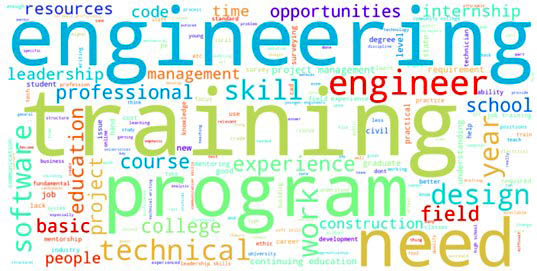Washington state’s ability to deliver infrastructure programs is being constrained by a widening shortage of civil engineers and land surveyors. This study quantified current and future workforce gaps, diagnosed their root causes, and proposed education-centered solutions.
This study, commissioned by the Washington State Legislature’s Joint Transportation Committee and prepared by the Washington State Transportation Center (TRAC) at the University of Washington, provided a comprehensive analysis of civil engineering workforce gaps, their underlying causes, and actionable solutions to rebuild and future-proof the state’s civil engineering and land surveying talent pipeline.
The researchers surveyed 47 employers and 917 practitioners to capture the durations of engineering job vacancies, upcoming retirement horizons, skill shortages, and reasons for attrition. They analyzed responses by using text-mining to categorize open-ended comments into dominant themes. They also conducted an audit of every educational pathway within Washington that feeds the talent pipeline.
Descriptive statistics showed that for 59 percent of employers, vacancy periods for civil engineering positions exceeded six months. They also revealed an urgent need for employers to hire additional staff within five years. Nearly one-third of the existing workforce will become eligible for retirement by 2035, threatening the continuity of project delivery. The most acute deficits are at the mid- and senior-career levels, where hybrid competencies in design, project management, and regulatory compliance intersect.
Analysis of respondents’ narrative answers pointed to three systemic pressures on the civil engineering workforce: the high cost of living and uncompetitive salaries; misalignment between academic preparation and job-ready skills (especially with hands-on field training, advanced digital tools, and interdisciplinary project management); and weak succession planning that fails to transfer institutional knowledge. Land surveying faces an even steeper demographic cliff, with few academic programs and high licensure barriers contributing to declining interest.
The audit of every educational pathway in Washington that feeds the talent pipeline covered four-year university degrees, two-year community/technical college programs, certificates, apprenticeships, and even online learning options. These programs annually produce roughly 300 to 400 civil engineering BS degrees, 100+ civil engineering MS degrees, 20 to 30 surveying/geomatics AAS degrees, and a few dozen engineering technology or related AAS degrees.
This report translated the findings into a three-part action plan:
- Goal 1: Close immediate skill gaps by increasing the availability of short-courses for skill expansion, offering more micro-credentials, and increasing continuing education funding.
- Goal 2: Expand and modernize civil engineering and land surveying degree capacity by targeting state appropriations, hiring more faculty, and reforming curricula, including emphasizing digital tools.
- Goal 3: Strengthen pipeline diversity and field readiness by increasing paid internships, apprenticeships, and K-12 outreach, with priority on under-represented communities.
Together, these pathways offer a pragmatic roadmap for legislators, educators, and industry leaders to rebuild, diversify, and future-proof Washington’s civil engineering and land surveying workforce.
Authors:
Mehrdad Nasri
Muhammad Karim
Ryan P. Avery
Yinhai Wang
UW Department of Civil and Environmental Engineering
Sponsor: Joint Transportation Committee, Washington State Legislature

